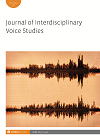
Full text loading...

This article analyses the eugenicist imperative governing speaking and non-speaking characters in western televisual representations, including films such as The Bride of Frankenstein (1935) and The Shape of Water (2017), and in the trope of the zombie. Typically, sublinguistic sounds are either assigned to human characters with supposed intellectual disabilities, or to reanimated, subhuman characters such as monsters and zombies. In both cases, characters denied speech are subject to isolation, sterilization or death, thus mirroring the status of voice in western constructions of humanness as it informs eugenicist discourse on disability.

Article metrics loading...

Full text loading...
References


Publication Date:
https://doi.org/10.1386/jivs_00007_1 Published content will be available immediately after check-out or when it is released in case of a pre-order. Please make sure to be logged in to see all available purchase options.